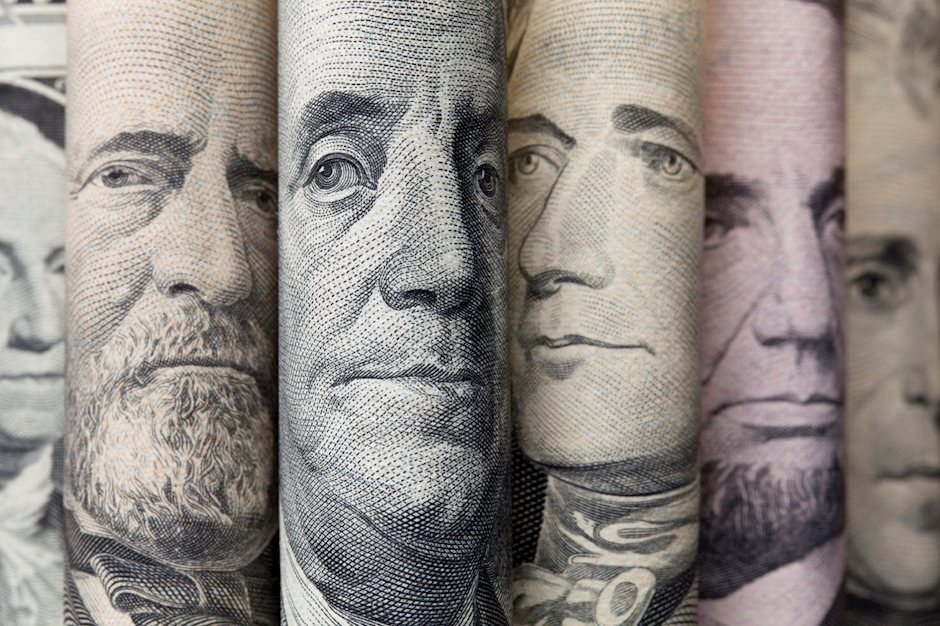Dollar Powers Higher, Unfazed by Weak Jobs Report

The U.S. dollar is strong and the market's reaction to what was an unquestionably weak jobs report is a testament to their commitment to driving the greenback higher ahead of September's FOMC meeting. After an initial dip, dollar bulls came back in force, taking USD/JPY within pips of 110.50 and EUR/USD below 1.19. Bond and equity traders also shared this complete disregard for softer data as they sent Treasury yields and stocks higher. Even Fed Fund futures show an increased chance of a December rate hike. All of this is completely out of sync with fundamentals as the slowdown in wage growth, uptick in the jobless rate, downward revisions to last month's labor data and the significantly weaker non-farm payrolls report should have driven the dollar and yields sharply lower. Only 156K jobs were created in August, the unemployment rate increased to 4.4% and average hourly earnings growth slowed to 0.1%. What made the report even worse was the fact that wages in July were revised down to 0.1% from 0.3% erasing one of the main reasons for last month's post NFP rally. The only reason for the dollar's rise is that investors are hoping for hawkish comments from Fed officials next week. We know that minimally Fed President Dudley supports a year end rate hike and even if other Fed officials refrain from talking about December tightening, there's no doubt that they will agree that balance sheet reduction needs to begin. Yet that's completely priced in and Friday's disappointing labor market report gives Yellen more reasons to avoid signaling that another rate hike is coming. For this reason, along geopolitical risks and the ongoing debt ceiling debacle, we believe the U.S. dollar should be trading lower and not higher.
Throughout this past week we have expressed skepticism about the U.S. dollar's rally. Investors were hoping for a major tax reform announcement from President Trump (that didn't happen) and were satisfied with the Administration's relatively benign response to North Korea's missile launches. However NK hasn't officially backed down and the Trump Administration has gone ahead and escalated tensions with Russia by ordering the closure of 3 Russian diplomatic facilities in the U.S. So unfortunately geopolitical tensions, the debt ceiling debacle and uneven U.S. data continue to plague the currency. Looking ahead, there are not many U.S. economic reports on next week's calendar but what the Fed says on September 20th will be on everyone's minds especially with Fed Presidents speaking throughout the week on relevant topics such as the U.S. economic outlook and monetary policy. Dudley's views will be particularly important as he is a one of the key architects of Fed policy and chances are he'll be hawkish because when he spoke in early August he said he supports another rate hike before the end of the year. Data wise factory orders, durable goods, the trade balance, the Fed's Beige Book and non-manufacturing ISM are due for release.
EUR/USD hit a 2-year high of 1.2070 before sinking below 1.19. These wild swings were primarily driven by the market's appetite for U.S. dollars but on Friday, the currency fell sharply after Bloomberg reported that the ECB may not have the appetite to rush into a decision in September. They want to exercise extreme prudence on communication and policy and as such, they may not be want to make an announcement to unwind QE until October or December. The market had high hopes for next week's ECB meeting but now they'll have to temper those views. This is the meeting that everyone has been waiting for because the ECB is widely expected to slow or taper its pace of asset purchases and while Bloomberg's report raises red flags, the announcement did not officially come from the ECB so they could still taper next week. The Eurozone's economy has performed extremely well over the past few months and with inflation on the rise, the time for the central bank to start reducing stimulus and normalize policy is nearing. There's been notable improvements in the economy but there's also been pockets of weakness that has some economists worried about a dovish taper. This means if changes are made, Draghi could downplay them by expressing concerns about the high level of the currency and stressing that monetary policy remains extremely accommodative. It is not clear which way the central bank will lean and that's what makes this month's meeting so important. The euro is very strong and the central bank is acutely aware of its consequences but at the same time it is still trading below its 5 year average and the comments that we have heard from other ECB officials suggest that they are not excessively concerned about its level. So if the ECB looks beyond the FX rate appreciation with the ECB announcing taper and Draghi talking confidently about the prospects for the economy the EUR/USD will hit new 2 years. However if they forgo reducing asset purchases or puts a dovish spin, EUR/USD could fall quickly and aggressively towards 1.17.
The Bank of Canada's monetary policy announcement will also garner a lot of attention after the latest GDP report. Canada's economy is on fire and so is the Canadian dollar. Despite the threats of the U.S. leaving NAFTA and the recent dip in oil prices, Canada is running on all cylinders. It is experiencing the fastest pace of growth of all the G7 nations which fuels expectations for another rate hike. The BoC raised interest rates when they last met in July and they could do so again in September. In the month of June, Canada's economy expanded by 0.3%, driving the quarterly GDP growth rate to 4.5% from 3.7% yoy, the strongest pace since 2011. Even if the BoC passes on raising interest rates, the tone of the their monetary policy statement will be hawkish and that could be enough to not only drive USD/CAD to fresh 2 year lows but all the way down to 1.22 and possibly even 1.20. Until the BoC starts expressing concerns about the currency, the Canadian dollar has the brightest prospects and should continue to outperform all other major currencies. Not every part of the Canadian economy saw improvements since the last monetary policy meeting with retail sales slowing and price pressures easing. For this reason, the BoC could be cautious and that's an important risk for investors to consider.
Of the 3 monetary policy meetings on the calendar next week, the Reserve Bank of Australia's should be least interesting. Unlike the ECB and BoC, the RBA is not ready to make changes. Monetary policy is accommodative enough and with their recent downgrades in GDP growth along with their concerns about their currency, they won't be thinking about tightening either. Economic data has been mixed since their last meeting with weaker consumer spending and inflation offset by stronger labor market conditions and manufacturing / service sector activity. We think the RBA will maintain a cautious tone that should prevent meaningful gains in the Australian dollar. Aside from RBA, PMI services, GDP, retail sales and the trade balance are also scheduled for release along with speeches from RBA's Lowe, Heath and Debelle. So while the RBA meeting may be the least interesting of the 3 monetary policy announcements, the Australian dollar could still be on the move. Meanwhile the New Zealand dollar was hit hard this past. Softer economic data and another reminder from RBNZ Governor Wheeler that the central bank is uncomfortable with the high level of the currency sent NZD tumbling lower. This move drove AUD/NZD above 1.10 to its highest level in 16 months and the next stop could be 1.13. No major New Zealand economic reports are scheduled for release next week but the market's appetite for AUD and Chinese trade data could play a big role in how the currency trades.
Although sterling ended the week not far from where it started, this resilience is actually a testament to the currency's strength because other major currencies were hit by the rising U.S. data. This past week's U.K. economic reports were mostly better than expected with mortgage approvals rising and manufacturing activity accelerating. The PMI manufacturing index rose to 56.9 from an upwardly revised 55.3 in the month of August. Looking ahead, sterling will most likely to take its cue from the market's appetite for U.S. dollars and any Brexit related headlines. The UK's PMI services and composite index are scheduled for release along with industrial production and trade balance. While the PMIs are always worth watching in a week filled with so many important releases they could easily take a back seat. Keep an eye on EUR/GBP which could sink down to 91 and maybe even 90 cents pre-ECB.
Author

Kathy Lien
BKTraders and Prop Traders Edge

















